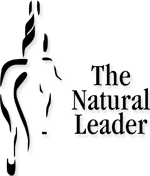 Hello Nancy: Thank you for your email and the pictures, I really love the one of me with Rhys.
Hello Nancy: Thank you for your email and the pictures, I really love the one of me with Rhys.
I have sent my feedback into the team at the University of Calgary to let them know that this course was probably the most influential and effective course that I have ever been on. It did something to me I can’t quite put a word or phrase too, but it has definitely effected my perception of how I act around people, both verbally – but even more so – through body language. I have also suggested that Continuing Education consider making this a 2 day course as there is just so much to learn. It is truly ground breaking on how the experience with horses teaches things that I never would have picked up in a classroom setting.
The most pronounced example for me was when your assistant walked out into the arena with the hurried and abrupt body movements, how immediately that impacted the horses! As a result of observing the changes and reactions the horses had – I am very conscious of how I walk into work in the morning and even more attentive to how I come into my home at the end of my day at work. It is amazing, but by me focusing on really being gentle and happy – everyone seems to be more relaxed and happy as well. What a way to end a day with my family! No matter what has happened or what frustrations I had during the day, seeing that they are all calm and happy, just makes the world of difference.
I have also noticed that I am much quieter in my voice pitch and I focus on being clearer when asking my children, husband and colleagues to do things. I try to imagine ‘dancing’ with them, and if we could move across the office, or across the kitchen- with my family, based on the information that I am giving and how I am asking it. I have already started changing my tone and also have stopped assuming everyone knows exactly what I am talking about, as well as my perception that they will do things the way that I think they will. Rhys definitely showed me to expect the unexpected. I know that it has been a week today, but these examples alone has helped me both personally and professionally.
Nancy – I want to say ‘Thank You’ again to both you and Fred, for opening up such a new and honest perspective of how I can be a good person – not just a good leader. You have tapped into something that I wish every person could experience. I think it would change so much of the agitation and aggression that we all are guilty of carrying (which of course we think we are hiding within ourselves , without even noticing how it effects our family, friends, colleagues and perfect strangers!). Warm regards, Maryann

 Ever had one of those tangible moments when you actually believe, that others believe in you?
Ever had one of those tangible moments when you actually believe, that others believe in you? Known for the Stampede and Spruce Meadows, Calgary is a hub for international competitors and horses. At these levels of competition one can’t help but notice the number of mares represented in the final round of cattle work, that famous eight second ride or the jump- off. It is a gender parity that puts the business community to shame.
Known for the Stampede and Spruce Meadows, Calgary is a hub for international competitors and horses. At these levels of competition one can’t help but notice the number of mares represented in the final round of cattle work, that famous eight second ride or the jump- off. It is a gender parity that puts the business community to shame.